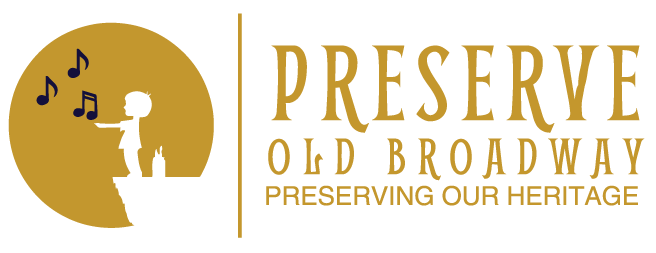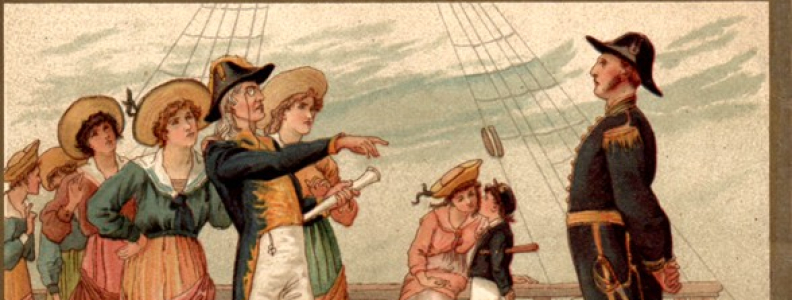European Musicals Give Way to American Forms
As we can see from the technological developments from 1870-1916, by the turn of the 20th Century music could be enjoyed in more American homes than ever before, by playing sheet music on home pianos, piano rolls on player pianos or records on crank phonographs. Technology provided alternatives to buying and playing a piano in order to listen to published scores and songs. Americans now had the option of buying phonographs and records to enjoy the work of professional performers, all in the comfort of their homes. This would radically change with the advent of affordable radios the mid-1920’s.
But what music were they listening to?

Johann Strauss II
In 1870, operas and operettas were imported from Europe into our opera houses and upper end theatres, while American popular music, minstrel music, vaudeville routines, burlesques and extravaganzas filled our music halls.
The imported operas and operettas portrayed a ruling class and the struggle of individuals within this societal construct. Whether the librettos described an organized, political rebellion or just an “individual rebellion” within the “Establishment” (against an “arranged” marriage, for example), there was, in each show, the opportunity to have lots of people in gorgeous costumes–men cast as members of royal families or military officers and women in low cut ball gowns most admirably fending for themselves.
One of these imports was Jacques Offenbach’s operetta La Grande Duchesse de Gerolstein, presented by H.L. Bateman at various theatres in New York, starting in September 1867, just five months after its Paris premiere.
One of the greatest imports was Johann Strauss II’s Die Fledermaus (1885.14), a good show that contains a magnificent overture. Here is a performance from the Vienna New Years Concert in 2010.
While there was a fascination in America about foreign royalty, there was also a growing desire to watch Americans behaving as themselves in local settings. Thus, while Americans would go to see European or American operettas, set in distant lands, they would also flock to see Harrigan and Hart comedies (“Mulligan Guard” series of shows) or George M. Cohan’s cocky Yanks win out over the those in power.
By the time that Victor Herbert’s greatest score was being produced in 1917 (Eileen 1917.07), Jerome Kern was packing them in at the Princess Theatre with librettos about common Americans getting into and out of trouble. While operettas were still not a thing of the past (the best of Rudolf Friml and Sigmund Romberg were yet to come), their decline started with Eileen.
While many American composers, such as Kern, Irving Berlin and George Gershwin wrote songs for revues, almost all of them were putting on major musicals by the mid-1920’s.
As we progressed deeper into the 1920’s, a pivotal moment came to American Musical Theatre in the form of a blockbuster show, made from a best-selling novel. The name of the novel and the show was simply Show Boat. Yet, in that seemingly simple title, the history of American Musical Theatre changed forever. Show Boat (1927.67) may not stand out as the best musical ever to be written, but it stands out forever as the first one to scale the heights of an integrated, “book” musical: one that would combine an excellent score and libretto, filled with American sounds and American problems in a sophisticated, serious manner, without resort to nonsensical plot twists.

Jerome Kern in the 1930’s
Show Boat reflected an act of faith in the future of an American art form and laid the groundwork for Gershwin’s folk opera, Porgy and Bess (1935.13), Richard Rodgers’ ballet-within-a-show, On Your Toes (1936.05) and finally, Rodgers and Hammerstein’s immortal Oklahoma! (1943.04).
The progression from minstrel acts and vaudeville entertainment was summed up this way by two luminaries of British Theatre, Richard Eyre and Nicholas Wright, in their book, Changing Stages:
“If we take for granted now that a musical can fuse dialogue, song and dance in the service of dramatic narrative, it is because Rodgers and Hammerstein made it seem as inevitable and necessary as the invention of television. They changed the course of American musical theatre just as Chekov and Ibsen changed the course of twentieth-century drama: in both cases transforming existing forms by embracing real issues, and examining real characters and situations. In the case of the musical, an apparently endemically frivolous medium became a vehicle for serious situations and profound passions. The musical grew up. What had been fitfully attempted in Showboat became triumphantly achieved [in the Rodgers and Hammerstein collaborations]: a seamlessly unified depiction of narrative and character through dialogue, song and dance.”
We will cover early forms of musical entertainment (including minstrel acts and vaudeville) in other parts of this Section; and while Eyre and Wright correctly stated that the musical “became a vehicle for serious situations and profound passions,” they missed the biggest change of all, the development of profound philosophical themes. Given their admiration of Oscar Hammerstein II, they should have recognized that it was not coincidental that Hammerstein collaborated on both Show Boat and Oklahoma!

